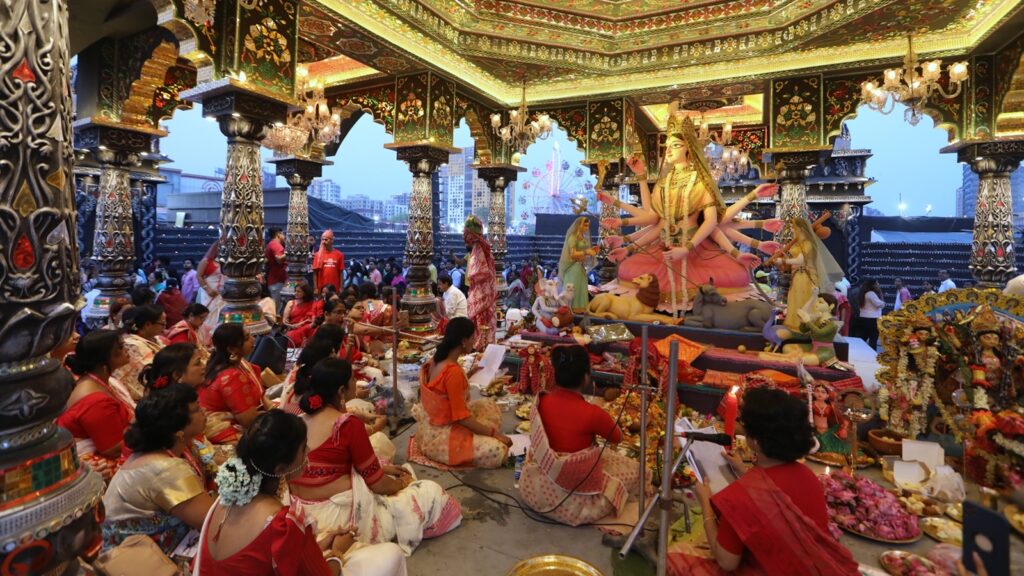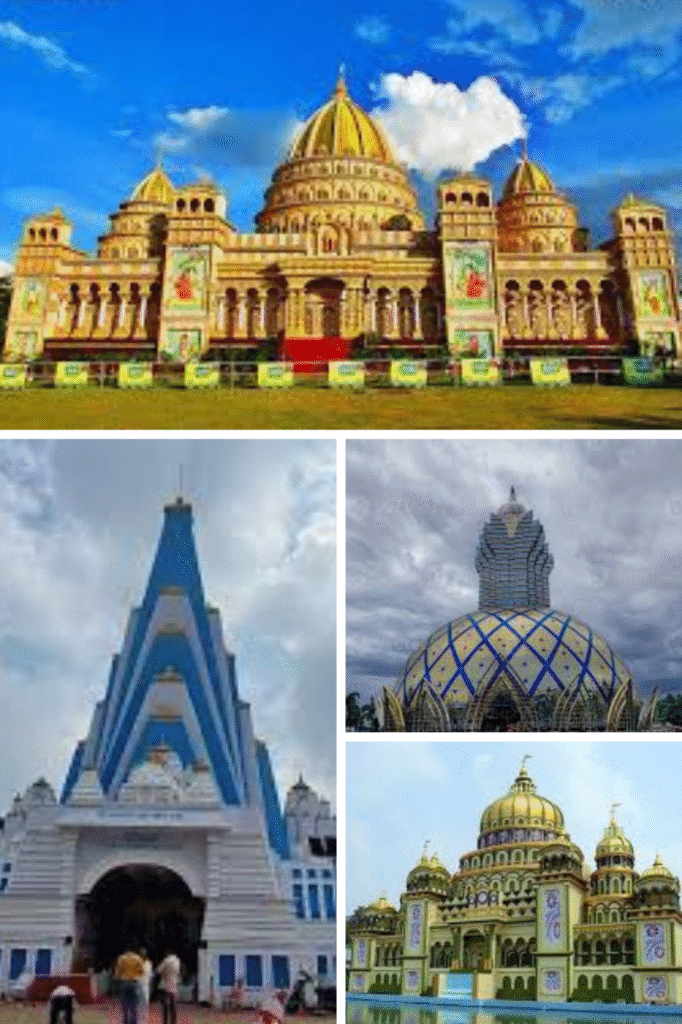About
Kolkata, the capital of West Bengal, India, is known as the “city of joy” and lights up for Durga Puja every October. The Hindu goddess Durga, who is seen as a mother, a daughter, a warrior, and the destroyer of evil forces, is the object of this magnificent celebration. An outstanding illustration of intangible cultural heritage is Durga Puja. It skillfully combines old artistic traditions with contemporary creative manifestations, fusing profound religious meaning with a secular mentality. Its universal cultural value was acknowledged in 2021 when it was included to UNESCO’s Representative List of the Intangible Cultural Heritage of Humanity.The Goddess Durga’s mythology and symbolism are crucial to this festivity. She represents the victory of good over evil by defeating the demon Mahishasura, who assumed the shape of a bull. She is regarded as a devoted mother and daughter in addition to being a fearsome fighter. Every year during the festival, she is said to return to her earthly house for five days with her divine offspring, Lakshmi, Saraswati, Ganesha, and Kartik. Durga Puja has developed into a magnificent celebration of art and culture, even though it still honors its strong religious foundations. Creativity blossoms everywhere as the city is transformed into a vast public art exhibition.The focal point of this event is traditional handicraft and art. The temporary clay idols of Durga, which represent significant events from her mythology, are in the center of it. Similar to pop-up museums, intricate installations known as pandals cover streets; each has its own distinct subject, message, and artistic expression. Every area has these, transforming the entire city into a lively and happy place.
Idols Made:

On Mahalaya, the first day of the celebration, Chokku Daan, also known as the “Eye Drawing” ceremony, is the most significant Durga Puja rite. Following her victory over the demon Mahishasura, the goddess Durga makes her appearance on Earth at this hallowed time. It is thought that the goddess herself enters the clay image and gives it life when the eyes are painted on the statue. Because of the significance and holiness of this act, only the most experienced craftspeople from the idol-making society are permitted to draw the eyes.For for than 200 years, this idol-making custom has been handed down via families. Located next to the holy Hooghly River, a branch of the Ganges, in Kumartuli, a historic area in North Kolkata, is the center of this craft. Generations of potters have preserved this cultural legacy in Kumartuli.

Additionally, it has long been customary to gather clay from the Ganges and finally return it to the river in order to make idols. During Durga Visarjan, the festival’s last day, worshippers bid the goddess farewell with sincere prayers and dance while her idol is submerged in the river. As worshippers say goodbye to their cherished Mother Durga, there is a lot of emotion in the air, including joy, enthusiasm, and even tears.
The link between idol-making and sex labor is, in my opinion, one of the most intriguing customs and beliefs—viewed by some as a historical fable and by others as a behavior that is still practiced today. A tiny amount of clay is left outside a sex worker’s home for one night before being used to create the goddess idol. The belief is that the clay absorbs the intentions and spirit of those men who leave their sins and desires at her door before it becomes a part of something sacred.
Theme based pandals

Thanks to proud Bengali Indians residing overseas, Durga Puja, which was formerly a provincial event, is now growing into a worldwide festival. The Bengal Heritage Foundation launched Durga Puja festivities in London, UK, in 2009. Over the course of the last 12 years, what began with a small number of dedicated families has expanded dramatically, attracting approximately 10,000 guests who are all trying to bring Kolkata’s Durga Puja back to life abroad.In one notable case, idol makers from Kumartuli, a well-known artisan district in Kolkata, were asked to travel to London to create a Durga idol using a mixture of Ganges and Thames River water. On another occasion, a banana plant, which represents the Goddess, was immersed in the Thames as part of the customary Saptami bathing ceremony.
Durga Puja is now a cultural bridge that promotes a sense of world togetherness via shared heritage thanks to these exquisite fusions of tradition and surroundings.
